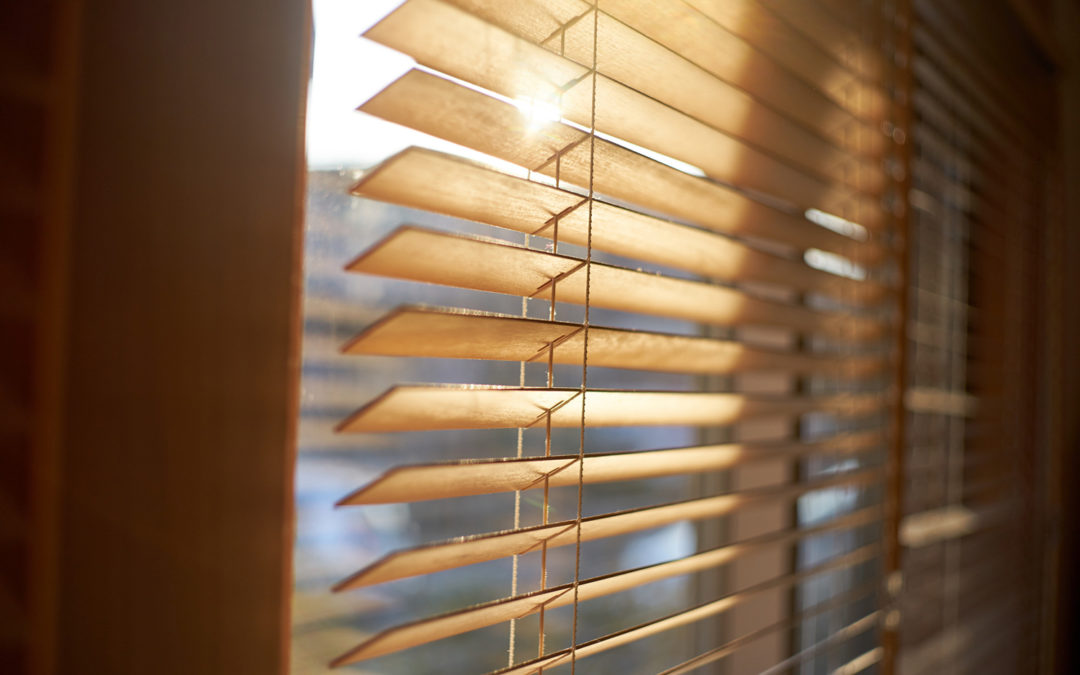Wood blinds have quickly become the world’s most popular window treatment. Find out if real or faux wood is better for your windows.
The stylish class of wood blinds is a timeless way to update any room in the house.
But how do you know whether to choose real or faux wood for your new blinds? Which colors would look best with your decor? And how do you measure up for the perfect fit?
Here’s everything you need to know about choosing a wood blind for your interior design project.
Real vs Faux Wood Blinds
There are advantages and disadvantages for both real and faux wood blinds. Here’s what you need to consider when you’re choosing which type to buy.
Faux Wood
Faux wood is the budget-friendly option for any home. A combination of wood pulp and resin, or PVC compounds, make up the material for these blinds.
Faux wood is durable and comes in a wide range of colors. The slats also won’t warp, fade, or crack over time, even with heavy use in high-traffic areas.
However, a faux wood blind is heavier than real wood. The slats are often thicker, which means when the blind is raised a bulk will remain at the top of the window. This reduces some opportunity for light to enter the room.
Real Wood
Real wood is the more expensive option, but the range of wood colors and luxury makes it worth the cost.
Wood from sustainable sources means these blinds can be environmentally-friendly, too.
Woods come in natural colors ranging from light oak through to dark mahogany, but can also be stained in other colors if you prefer.
The thinner depth of each individual slat means a real wood blind allows more light into the room when it is raised, as the compressed slats take up less room at the top of the window.
Complementary Color Schemes
It’s tempting to opt for a light color wood for your new blinds, as this gives the optical illusion of a larger room. Sunlight looks great against light wood blinds, giving a bright and fresh atmosphere to any room.
However, sometimes a dark wood color or stain is a perfect companion for neutral color schemes or in rooms that need to have a cozy feel.
You can even mix wood colors as part of your room design to create variety and visual texture.
Research your color scheme and create an interior decor ideas board to make sure you’re choosing the right blind design for your vision.
How to Measure Up for Your Wood Blind
When you’ve decided which wood type you want to use, it’s time to measure up. Here’s how to make sure your blinds are the right size.
Choose Your Mount
Measuring up for your custom wood blind is straightforward – but first, you must decide whether you want an internal or external mount.
An internal mount lies next to the window pane. A blind set here allows you to set up other window dressings such as drapes on the external portion of the window.
The external mount sits away from the window pane, where you would usually place a curtain rail. Blinds may need to be placed here, instead of internally, if your window has a narrow sill or there is no suitable way to fix the blind to the window frame.
Measure the Width
Measure the width of the window first. For an internal placement, measure the width of the interior area of the window pane. Remove half an inch on each side to allow for free movement of the blind once installed.
For external placement, measure the window width and add a few inches. Slightly wider blinds can help to block light and add more of a feature to the room.
Measure the Length
Measure the drop of the blind next. Take the center point of the top fixing for your blind and measure down to the sill for an internal blind. For external blinds, measure a few inches below the sill for a neat finish.
Don’t Add or Remove Inches for Fittings
Provide the exact size you want for your blind. There’s no need to take away, or add, any additional measurements to account for the blind fittings. This is taken into account when your custom blind is created.
Affordable Blinds That Look Luxe
Cost is always a factor when deciding whether you want real or faux wood blinds in your home.
The good news is that you don’t have to sacrifice luxury for your budget – especially as both faux and real wood designs look phenomenal when you choose the right supplier.
Our range of window blinds gives you a wide scope of choice in material and color for your budget, without compromising on quality. Contact us today to find out how to use affordable blinds for your next interior design project.


Recent Comments